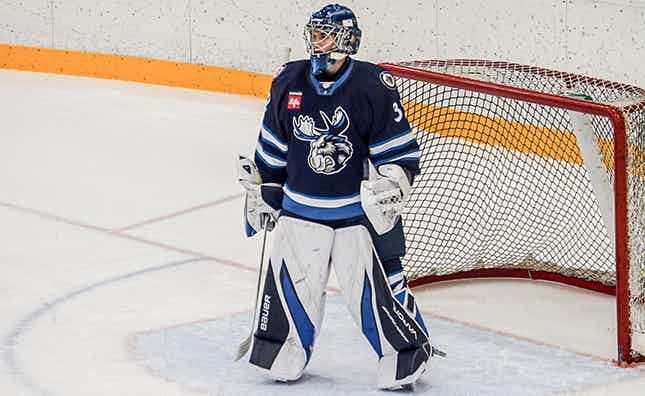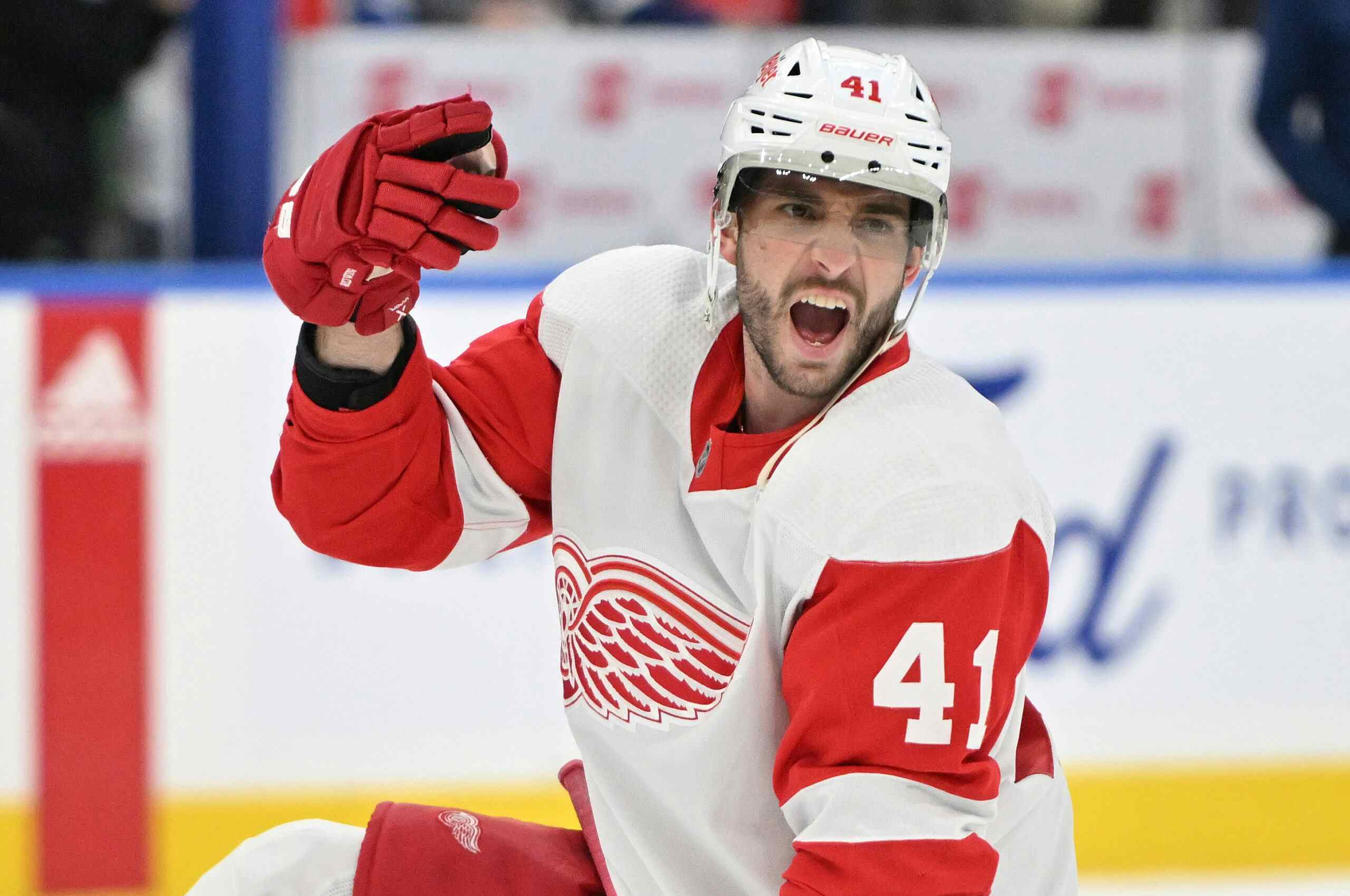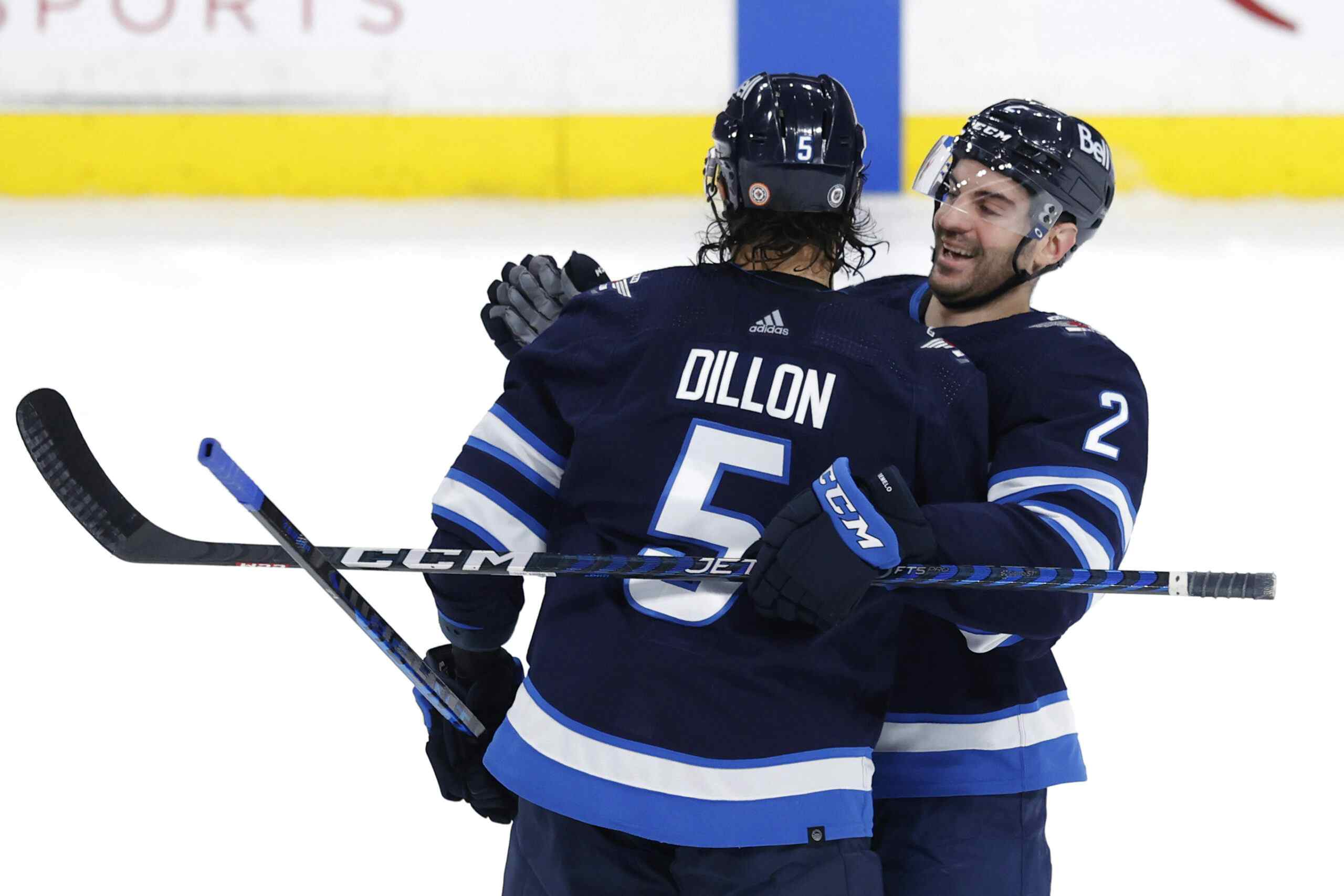How are the Manitoba Moose vets performing?
By Garret Hohl
8 years agoThe Moose are arguably the worst team in the American Hockey League. They get out shot a lot; they get out scored a lot. The team struggles to prevent goals and they struggle to produce them.
We previously discussed how the Manitoba Moose have been over reliant on their youngest players to produce offence.
While the Jets’ prospects and other young players on the Moose have not been exactly league leaders in scoring, there is a huge issue with the veteran players inability to produce as they should.
Is it due to the Moose’s choice in veterans though or is it maybe something else?
I wanted to take a look at the performance of the Moose non-rookie players, by comparing their point and shot productions per game relative to their historic output.

Players are listed in highest to lowest point total.
The blue and green bars show the skaters’ historic values, while the red and purple bars show their output this season.
It’s still a difficult visual though to see when players are over or under performing their typical norm. So, I then recreated the same graph but this time looking at the difference between this season and previous seasons.

I apologize for the label overlapping, as the options were limited and this was the “least terrible” one.
In theory, a player in a positive environment should see their current output being higher than their norm. This environment can be any combination of factors such as system, coaching, quality of teammates, etc.
Only five “veteran” players are scoring more than they historically produce. All five of them are playing their second or third season of pro-hockey, and very much still in player development phase of their growth curve.
Brenden Kitchon and JC Lipon are both in their third year, Austen Brassard is in his second, while Scott Kosmachuk and Ryan Olsen were merely rookies last season. None of these players are the veterans signed to help make the Moose competitive and help the younger players grow and develop.
John Albert, Patrice Cormier, Matt Halischuk, and Matt Fraser were all expected to produce, yet are averaging just 11 points with over half the season completed. Jay Harrison, Julian Melchiori, and Andrew MacWilliam were supposedly there to help create some stability to the back end.
It’s a difficult game to balance though. You need veterans to keep the team competitive and construct a positive learning environment for your prospects on the farm team. At the same time, you want sufficient ice time available for your prospects to play.
It was only two years ago that the Winnipeg Jets carried a competent farm team, a winning team. There was a tonne of potent AHL veteran depth on the team; Jason Jaffray, Andrew Gordon, Jerome Samson, Eric O`Dell, and Kael Mouillierat were top-scorers for the club. Adam Lowry, Ben Chiarot, Zach Redmond, JC Lipon, Brenden Kitchon, and Micheal Hutchinson were all able to develop their craft under this team; now four of these players have moved on to becoming regular members of NHL teams.
Developing players on the farm team is hard. There is a balance needed where too much veteran depth will eat away icetime needed for prospect development but too little depth can be crushing. No one likes to lose. No one likes being on the league’s worst team.
Next year the Jets will likely have fewer prospects graduating to the AHL. Brendan Lemieux and Nelson Nogier will be leaving the CHL, and the Jets will likely attempt to bring Tucker Poolman and Jamie Phillips over from the NCAA. We could even potentially see the Jets sign Tanner Lane and Marcus Karlstrom to AHL contracts, much like they did last summer with Aaron Harstad, Brennen Serville, and Peter Stoykewych.
While 4-6 players may seem like a lot, the Moose have carried 11 rookies on their roster at one point or another, although some have been redeployed to the ECHL.
With all this youth, the Jets and Moose will need to play it smart. It’s easier said than done, but the Moose need quality AHL veterans who can help carry the team to success and lead by example.
Another component that could help give the Jets an edge in prospect development is to watch and learn from what Kyle Dubas and the Toronto Maple Leafs are doing in restructuring their developmental program. They have turned to take a more “baseball [like] approach” to their minor league system. No longer is the ECHL used as a place for prospects to die, but rather a way to help balance a large influx of youth while carrying quality veterans to help support the farm team.
Recent articles from Garret Hohl





